Whether you’re a small business, a multi-national corporation, an entrepreneur, or a social media “influencer,” chances are someone at some point is going to use your content on some kind of social media. You don’t want to just let this go, but at the same time, you don’t want to break the bank hiring a lawyer to send a demand letter every time it happens.
What can you do? Is there any fair, quick, and inexpensive method for addressing these issues?
For blatant infringement, yes. For closer cases, no. Social media platforms just aren’t going to take the time and effort to adjudicate intellectual property disputes between their users and the complainers in any satisfying way.
You’ve got two basic choices when someone uses your intellectual property on social media. Either submit a complaint through the platform’s portal and hope for the best, or have a lawyer send a demand letter and, if it becomes necessary, file a lawsuit. The first option is unlikely to get you what you want, and the second option is time consuming and expensive.
Still, doing nothing is not a good option. So if you’re a business owner or a lawyer who represents businesses, it’s worth your time to understand both the basic legal principles and the practical avenues available.
The first step is to understand the kind of “intellectual property” at issue. Nine times out of ten, if someone is posting your material on social media, it will be either a copyright or trademark issue.
So if you’re going to handle the takedown notice, you will need some understanding of the difference between copyright and trademark. This is important because the standards for copyright infringement and trademark infringement are entirely different, and because you need to select the right portal to submit your notice.
Copyright vs. Trademark
Copyright protects original works of expression. Think novels, poems, movies, TV shows, paintings, sculptures, music recordings, blog posts, just to name a few. For example, if you write and record a song and someone posts a copy of your recording on YouTube, that’s copyright infringement (potentially).
Trademark law, in contrast, protects words, short phrases, logos, and other things that function as source identifiers for goods or services. MCDONALD’S—and the golden arches—are trademarks for fast food restaurants. APPLE is a trademark for smartphones and computers. FIVE MINUTE LAW is a trademark for law blogs.
As with all things in the law, there are borderline cases. Does copying a seven-second clip from an iPhone commercial raise copyright or trademark issues? Law school professors love that kind of stuff.
But most of the time, if someone is using your content, it will be pretty obvious which one it is. Are they using your name or logo in a way that suggests they have some connection to you? Probably trademark. Are they copying some significant portion of a work of expression you created? Probably copyright.
This is an important distinction to figure out up front, because copyright law and trademark law are significantly different. But they do have one thing in common: you don’t have to register to have a valid copyright or trademark, but registration does give you certain additional rights that can be important. More about that later.
Let’s start with copyright, because it’s simpler.
Copyright Infringement on Social Media
The paradigmatic case of copyright infringement on social media is a copy of a recorded song posted on YouTube. This is so ubiquitous, I understand the young people don’t even buy music anymore. Why buy when you can just go to YouTube?
Let’s say I post a copy of “Honky Tonk Bodankadonk” on my YouTube channel, That Non-Compete Lawyer. Did I just infringe Trace Adkins’ copyright? The short answer is yes.
And by the way, it doesn’t matter if I include one of those disclaimers like “I do not own the rights to this recording . . .”
I don’t know why this kind of disclaimer became so popular. It has virtually zero legal effect. It’s like robbing a bank but carrying a sign that says “NO THEFT INTENDED.” If anything, it’s evidence that you knew you were infringing the author’s copyright.
But did YouTube infringe Trace’s copyright?
That’s a little more complicated. It’s one thing to hold a small-time litigator liable for copyright infringement. It’s another to hold a multi-billion-dollar social media company responsible. We can’t have that!
Fortunately, we have lobbyists and Congress to thank for passing the Digital Millennium Copyright Act (DMCA) in 1998. Its main purpose is to protect Internet service providers from copyright infringement claims.
The DMCA establishes a “notice-and-takedown” regime that applies to copyright infringement on social media. A social media platform can avoid liability if, “upon notification of claimed infringement,” it “responds expeditiously to remove, or disable access to, the material that is claimed to be infringing or to be the subject of infringing activity.” 17 U.S.C. § 512(c). See also Jon M. Garon, Tidying Up the Internet: Takedown of Unauthorized Content Under Copyright, Trademark, and Defamation Law, 41 Cap. U. L. Rev. 513 (2013).
Naturally, to avail themselves of the protections of the DMCA, all the major social media platforms have dedicated online portals where you can give notice of alleged copyright infringement (if you can successfully identify all the crosswalks in a photo).
For example, this is YouTube’s copyright infringement notice page:
Of course, that’s not the only way YouTube and other sites police copyright infringement. There is also automated copyright infringement detection. YouTube, for example, has a system called “Content ID” that automatically scans uploaded videos to compare them to its massive database of files submitted by content owners. If people copying and posting your stuff is a recurring issue, consider using the Content ID system to nip infringement in the bud.
Otherwise, you will need to submit a takedown notice. If it’s an obvious case of copying, that will probably be enough to get the infringing copy removed.
In contrast, I doubt that submitting a notice through a routine portal is going to work in less obvious cases. It’s not like YouTube employs a staff of musicologists to sit around trying to figure out if Robin Thicke’s “Blurred Lines” is substantially similar to Marvin Gaye’s “Got To Give It Up” or just has the same basic style.
But for most content creators, the issue is blatant copying, not borderline cases. And in those cases, the notice-and-takedown approach encouraged by the DMCA probably works pretty well.
If anything, notice and takedown may work too well in copyright cases. That’s because not all copying is unlawful. You might have noticed a reference to “fair use” on the YouTube page shown earlier. Fair use is an exception to copyright infringement.
Copyright “Fair Use”
It’s important to understand what fair use is and what it isn’t. It’s not a magic wand to be waved any time someone claims copyright infringement. Rather, fair use refers to various types of copying that the law allows because of their purpose.
And it’s a fuzzy term. That’s because the statute that codifies the fair use doctrine refers to fair use of a copyrighted work “for purposes such as . . .” 17 U.S.C. § 107. Then it lists some non-exclusive examples of fair use: “criticism, comment, news reporting, teaching (including multiple copies for classroom use), scholarship, or research.” Id.
The statute goes on to provide a list of non-exclusive factors determining whether a particular use of a work is fair use:
- the purpose and character of the use, including whether such use is of a commercial nature or is for nonprofit educational purposes;
- the nature of the copyrighted work;
- the amount and substantiality of the portion used in relation to the copyrighted work as a whole; and
- the effect of the use upon the potential market for or value of the copyrighted work.
So let’s say I have a YouTube channel where I review country music albums. If I play 10 seconds of “You Ain’t Much Fun (Since I Quit Drinking)” as part of my review of Toby Keith’s album Boomtown, that’s probably fair use.
I can only say “probably” because, again, fair use is a fuzzy concept in copyright law.
If that bothers you, then you really won’t like trademark law. It’s even fuzzier.
Trademark Infringement on Social Media
It’s not that hard to understand what a trademark is. I gave some obvious examples earlier. It’s harder to understand whether someone else’s use of your trademark is infringing or not. And it can be even more difficult to get a social media site to remove someone’s infringing use of your trademark.
Why is it relatively easy to get a social media platform to remove copyrighted material, but harder to get trademarked content taken down?
Let’s start with the DMCA. It applies to copyright infringement, not trademark infringement. There is no equivalent statute for trademarks. So the legal framework is not as clear when it comes to trademarks.
Still, just as they do for copyright infringement, the major social media platforms have specific portals for owners of trademarks to submit takedown notices. For a helpful list with links to the takedown pages for the biggest players, see How to Protect Your Trademarks on the Top 6 Social Media Platforms.
The thing that really makes trademark harder than copyright is deciding whether the use of a trademark is infringing. Just copying someone’s trademark is not necessarily infringing. Trademark infringement happens when someone uses your trademark—or something similar to it—in a way that creates a likelihood of confusion regarding the source of goods or services.
Remember, the key thing about a trademark is that it is a source identifier.
Let’s consider some simple examples. If I use the word APPLE to sell actual apples, that’s not trademark infringement. That’s a “generic,” non-infringing use of the mark. Similarly, if I tell a new client “don’t worry, you’re in good hands,” I probably haven’t infringed Allstate’s trademark, because I’m just using the phrase in a descriptive sense. In contrast, if I use APPLE to refer to my company’s knockoff laptops, I will probably get a nastygram from some lawyer in Cupertino. That’s trademark infringement.
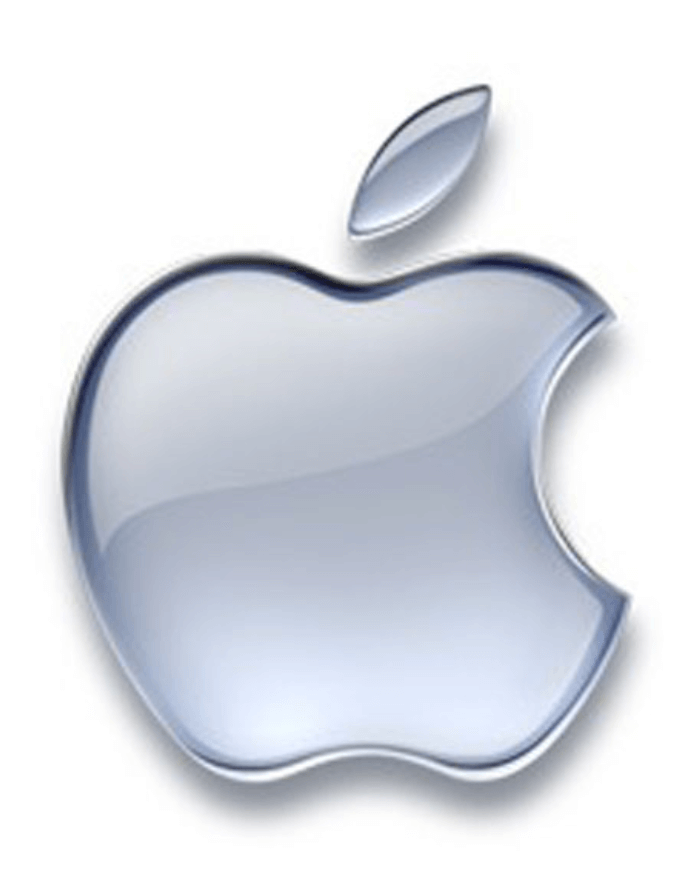
But what if I use the famous APPLE computer logo in a blog post about computers? Is that infringement?
This is where it gets harder. It depends on how I use it. If I use the trademark in a way that does not cause source confusion, that is “non-infringing” use. To make this even more complicated, trademark law also refers to some kinds of non-infringing use as “fair use,” which is not the same thing as copyright fair use. And then there are two kinds of trademark fair use, “traditional” and “nominative.”
But let’s not go down that rabbit hole now. Let’s focus on the practical. Assume someone is improperly using your company’s trademark in a way that suggests some sponsorship, affiliation, endorsement, or approval by your company. That creates a “likelihood of confusion,” which equals infringement. What can you do?
Trademark Takedown Notices
As with trademarks, the major social media platforms make it fairly convenient to submit a notice that someone’s content infringes your trademark. See the links in the “Top 6” article cited above.
This is where registration, also mentioned earlier, can be helpful.
Keep in mind, it is the use of a trademark, not registration, that creates trademark rights, and you don’t have to register a trademark to have trademark rights. But as a practical matter, your takedown notice will have a better chance of success if your trademark is registered.
Shannon Montgomery, a lawyer who represents social media influencers, explains this point here. See, social media sites are just not that into evaluating the strength of your claim to an unregistered, “common law” trademark. So check out this video by attorney Aiden Durham to educate yourself on trademark registration.
Unfortunately, even if your trademark is registered, social media platforms are still not that interested in adjudicating trademark disputes. And they make no bones about it. YouTube, for example, says the following on its trademark policy page:
If you are a trademark owner and you believe your trademark is being infringed, please note that YouTube is not in a position to mediate trademark disputes between users and trademark owners. As a result, we strongly encourage trademark owners to resolve their disputes directly with the user who posted the content in question.
Let me translate: don’t bother us with your trademark claim, bother the person who used your trademark.
But there’s good news. YouTube adds this: “Contacting the uploader may resolve things more quickly in a way that is more beneficial to you, the uploader, and the YouTube community.”
Just contact the uploader. That’s easy enough, right? For one thing, every YouTube post includes the name and contact information of the uploader, right? And when you contact the uploader and tell them they need to stop using your trademark, they’re sure to be reasonable and cooperate. What could possibly go wrong?
I’m jk, of course. It never goes like this.
At best you’ll get someone who means well but doesn’t understand trademark law. At worst you’ll get a troublemaker who is openly hostile to your client. So getting people to take down content that infringes your client’s trademark is not simple or easy. And even if you succeed, the same guy may do it again next week. I think the arcade game “Whack-A-Mole” was created just to give trademark lawyers a metaphor to overuse.
No, contacting the infringer is usually not an attractive option. So you submit your trademark complaint through the online portal. What are the chances of success? Let’s use YouTube as an example again.
To YouTube’s credit, when you submit a trademark takedown notice by email, you promptly receive a personalized note from “The YouTube Team.” It looks something like this:
In case you missed it on the policy page, this note provides a friendly reminder that “YouTube is not in a position to mediate trademark disputes between users and trademark owners.” You can see where this is going.
Tell your lawyer to prepare the demand letter.
________________________________________

These are his opinions, not the opinions of his firm or clients, so don’t cite part of this post against him in an actual case. Every case is different, so don’t rely on this post as legal advice for your case.

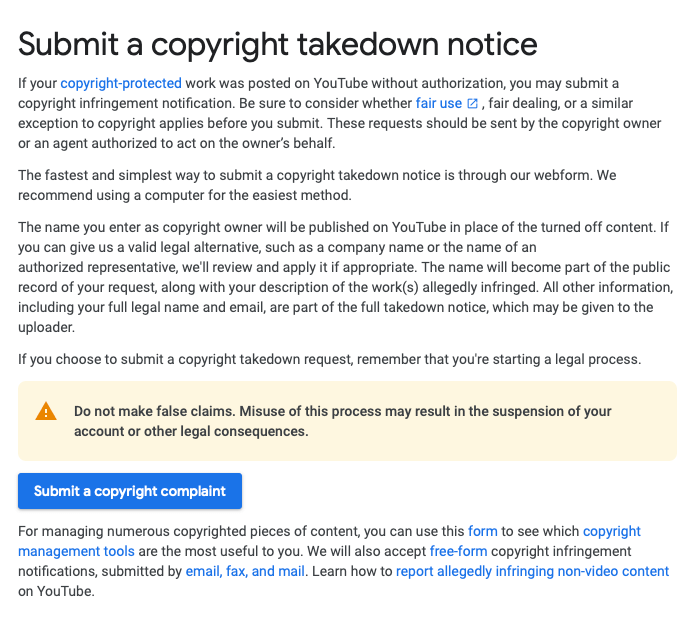
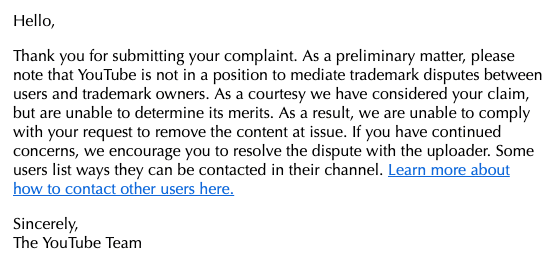
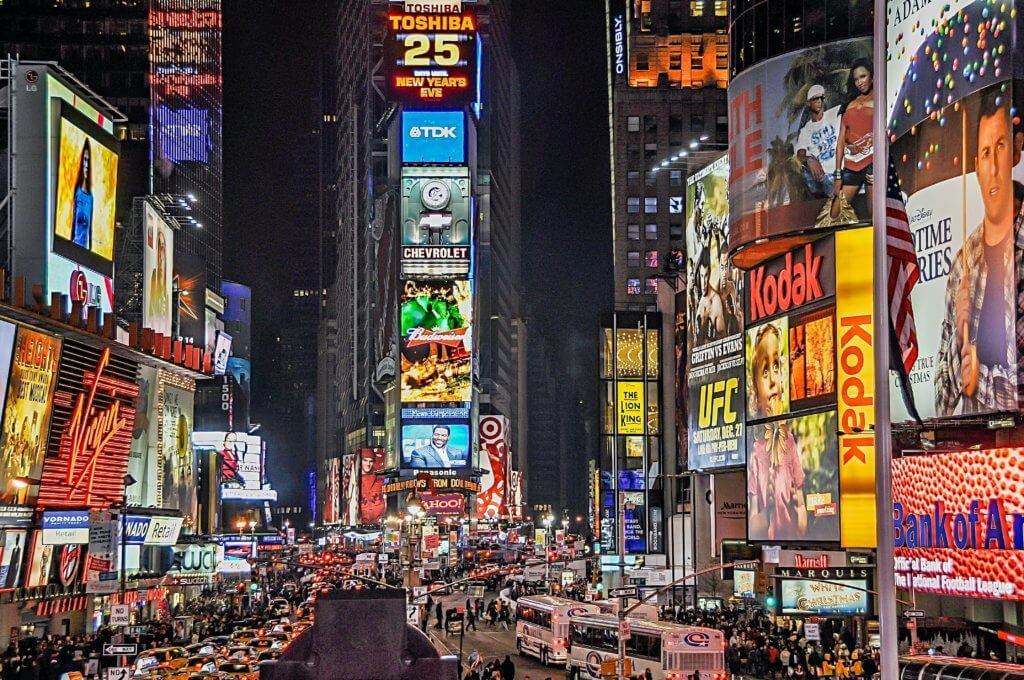
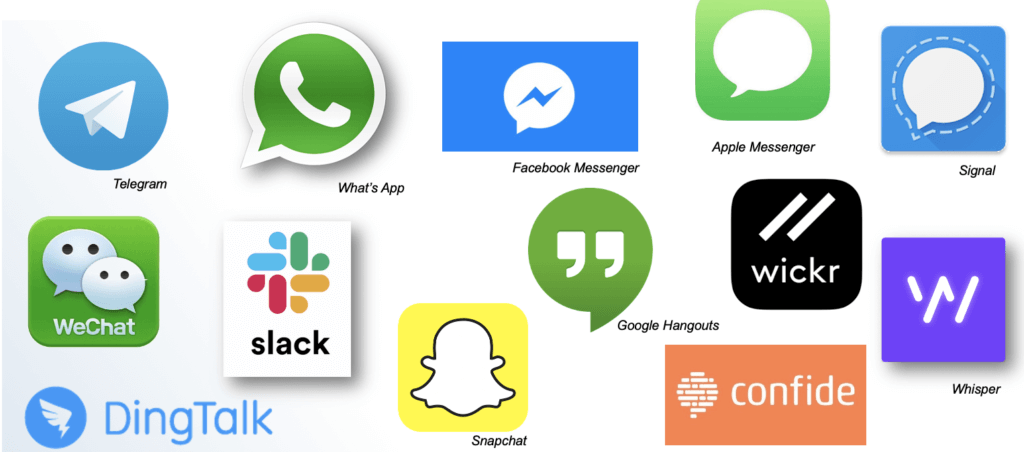
Comments:
Great information, thank you. What happens if the small business does not agree that they infringed on a trademark and they feel the complaining company made a misleading report of infringement of trademark and was not in good faith? What happens to that company? Also, does using hashtags in advertising infringe on trademarks if the hashtag is not trademarked?
Thanks for reading. When one party complains about trademark infringement to a platform, the platform may give the party who posted the content an opportunity to respond, but in my experience usually the platform doesn’t want to make the call on whether there is infringement or not. As to hashtags, as a *general* rule a hashtag will not receive trademark protection, but if you use someone else’s trademark (registered or unregistered) as a hashtag, it is *possible* that could be infringing, depending on how you are using it. Are you using it in a way that suggests you are somehow affiliated with the company that uses the trademark? If so, that could be infringing. If not, it is probably either non-infringing use or “fair use.” Anyway, as you can probably see, trademark issues are tricky, so it is best to consult with your own lawyer.
I have been filing Trademark complaints using the Youtube’s Trademark infringement form, but I have not received any response to date. The Youtube broadcaster has not posted any contact information, so I have no idea as to how to stop the misuse of my trademarks. Who can help me?
I sympathize! In my experience, trademark infringement takedown requests are often ignored. You might try a demand letter directly to someone in the legal department, rather than through the online portal.
Great read! Funny- we’ve had other real estate brokers completely copy our posts almost word for word! Imitation is the highest form of flattery, right? 😉
*Prima WomackWomack Real Estate REALTOR ® *
*512-567-8876*
*www.WomackRealEstate.com *
SEARCH AUSTIN HOMES!
_____________________________________________________
*”CONFIDENTIALITY*
This email message and any attachments is intended only for use by the addressee(s) named herein and may contain legally privileged and/or confidential information. If you are not the intended recipient of this email you are hereby notified that any dissemination, distribution or copying of this email and any attachments thereto is strictly prohibited. If you have received this email in error please notify the sender and permanently delete the original and any copies of this email and any prints thereof.
*No e-mails sent or received shall constitute a legally binding contract unless and until a written contract is signed by the parties.”*
Exactly